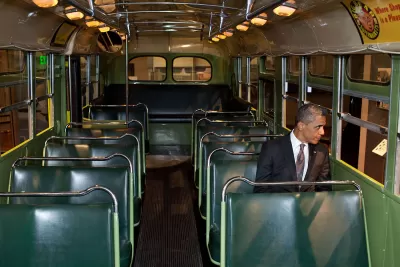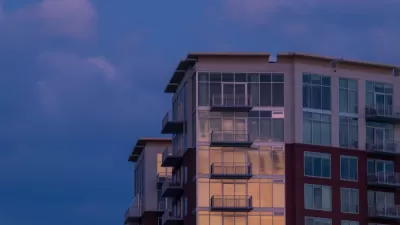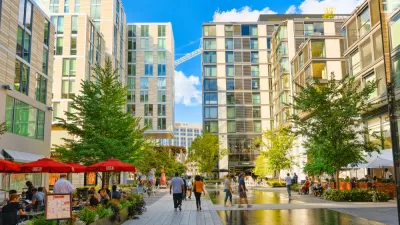Former President Barack Obama was at the AIA’s national conference in Chicago earlier this month. His presentation included some strong words about the effects of sprawl.

“Former US president Barack Obama has called on architects and policymakers to tackle urban sprawl and to "create livable density" in American cities,” reports Ben Dreith for Dezeen.
"Sprawl in America is not good for our climate. And so we have to think about creating livable density that allows us to take mass transit and take bicycles,” Obama is quoted as saying in the article.
Obama also cited Chicago as an example of a city where architecture had been used to reinforce inequality, such as with public housing projects like Cabrini Green.
“The former president believes that some of the problems found in Chicago and other major cities in the US are the result of government policy and zoning decisions,” reports Dreith. “[I]t's not just a lack of funding for affordable housing,” said the former president.
Obama also called out ostensibly liberal cities for opposing affordable housing.
"Frankly, some very well-intentioned laws and regulations at the local level, often generated from the left and from my own party, sometimes are inhibiting the creation of affordable housing and powering NIMBY attitudes and make it very difficult to integrate communities and allow people to live close to where they work."
Obama’s track record while in office on issues of urbanism and equity shows some incremental progress, stopping well short of comprehensive innovation. While the Obama administration succeeded in implementing the Affirmatively Furthering Fair Housing (AFFH) rule to advance the causes of the Fair Housing Act, the Trump administration worked to undermine those rules and critics questioned how effective the AFFH will be in achieving its intended goals. The Obama administration also supported pro-development reforms well before it was a broad trend at the local level.
FULL STORY: Sprawl in America "is not good for our climate" says Barack Obama

Manufactured Crisis: Losing the Nation’s Largest Source of Unsubsidized Affordable Housing
Manufactured housing communities have long been an affordable housing option for millions of people living in the U.S., but that affordability is disappearing rapidly. How did we get here?

Americans May Be Stuck — But Why?
Americans are moving a lot less than they once did, and that is a problem. While Yoni Applebaum, in his highly-publicized article Stuck, gets the reasons badly wrong, it's still important to ask: why are we moving so much less than before?

Using Old Oil and Gas Wells for Green Energy Storage
Penn State researchers have found that repurposing abandoned oil and gas wells for geothermal-assisted compressed-air energy storage can boost efficiency, reduce environmental risks, and support clean energy and job transitions.

Updating LA’s Tree Rules Could Bring More Shade to Underserved Neighborhoods
A new USC study finds that relaxing Los Angeles’ outdated tree planting guidelines could significantly expand urban tree canopy and reduce shade disparities in lower-income neighborhoods, though infrastructure investments are also needed.

California's Canal Solar Projects Aim to Conserve Resources and Expand Clean Energy
California’s Project Nexus has begun generating electricity from solar panels installed over irrigation canals, with researchers and state agencies exploring statewide expansion to conserve water and boost clean energy production.

HHS Staff Cuts Gut Energy Assistance Program
The full staff of a federal program that distributes heating and cooling assistance for low-income families was laid off, jeopardizing the program’s operations.
Urban Design for Planners 1: Software Tools
This six-course series explores essential urban design concepts using open source software and equips planners with the tools they need to participate fully in the urban design process.
Planning for Universal Design
Learn the tools for implementing Universal Design in planning regulations.
Heyer Gruel & Associates PA
City of Moreno Valley
Institute for Housing and Urban Development Studies (IHS)
City of Grandview
Harvard GSD Executive Education
Salt Lake City
NYU Wagner Graduate School of Public Service
City of Cambridge, Maryland




























